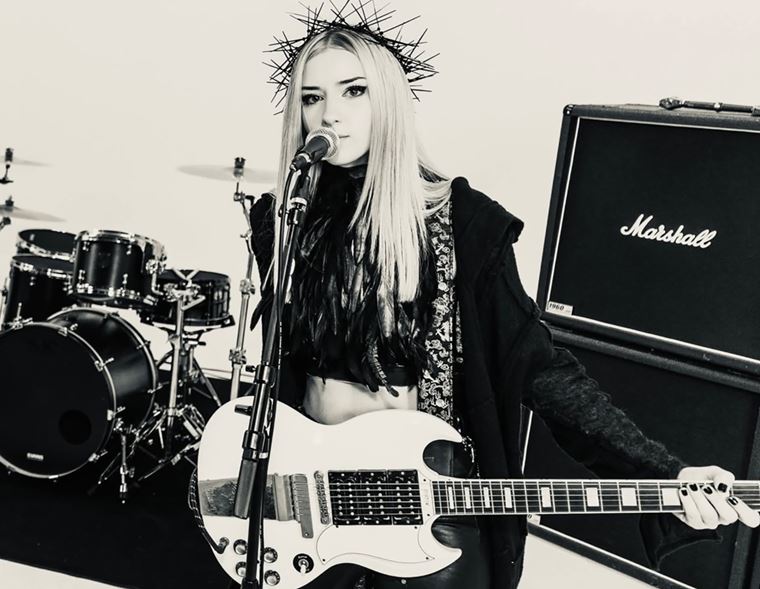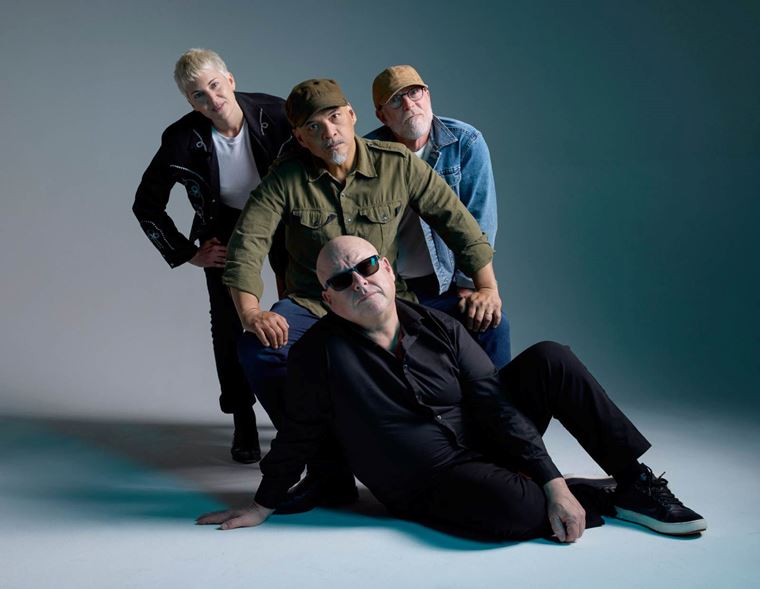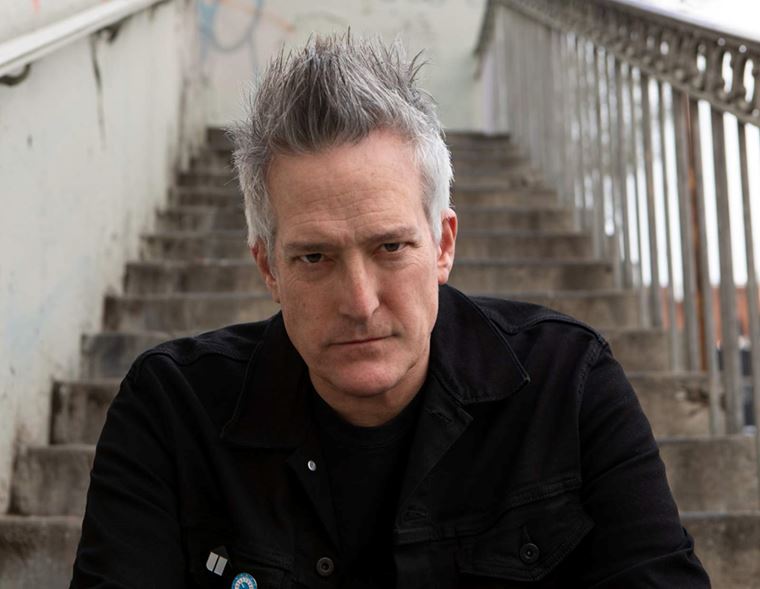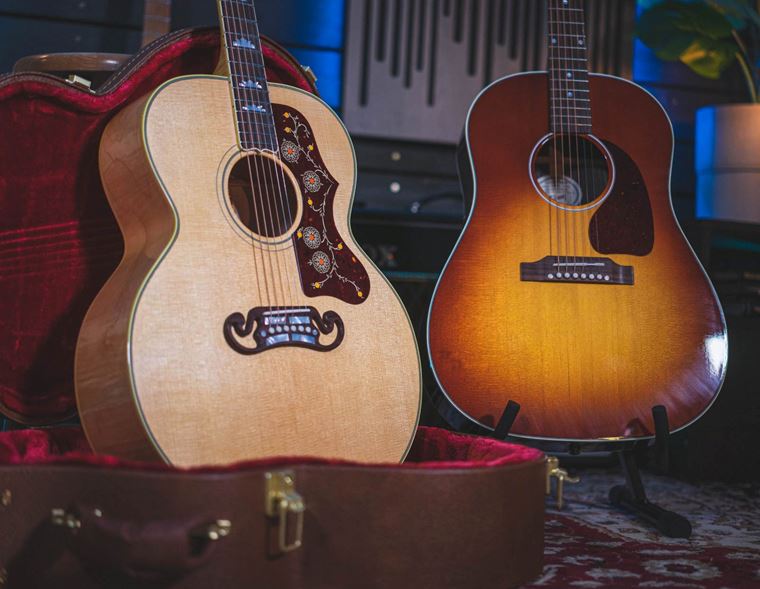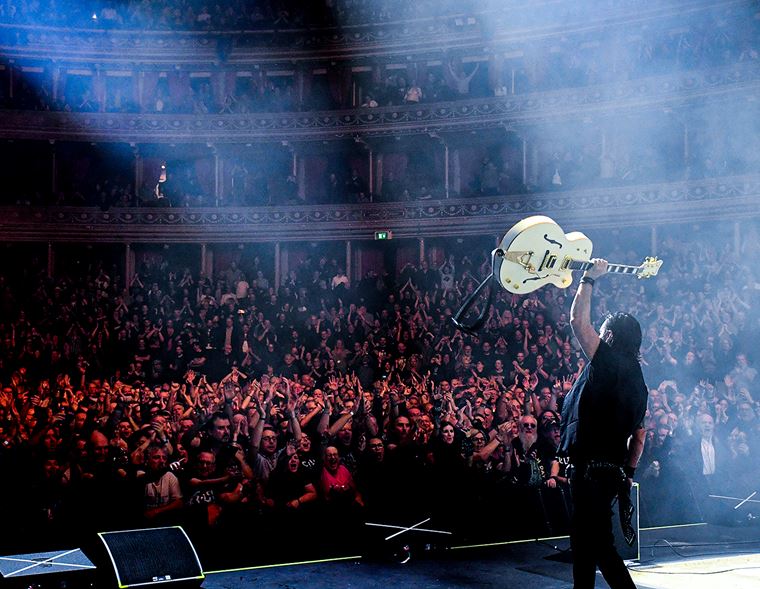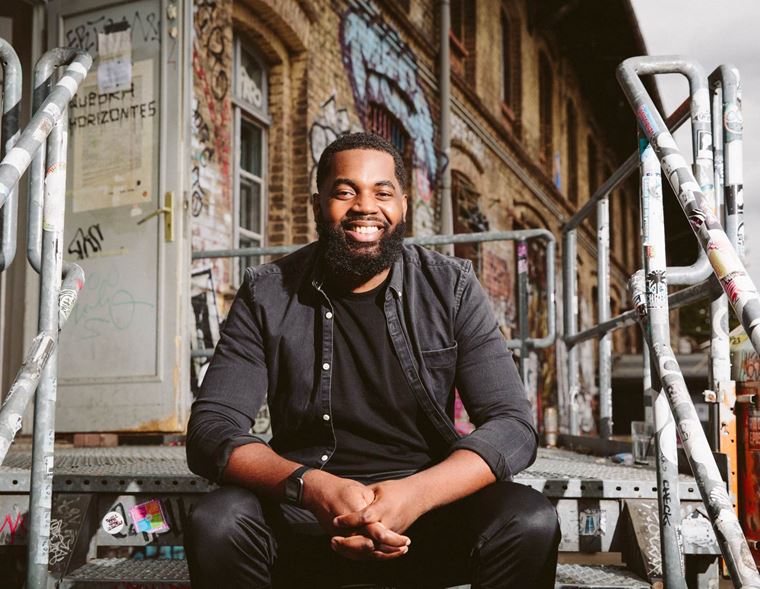Meet Your Maker: Ken Haas of Reverend Guitars
Published on 19 November 2019
Reverend guitars are making friends in all the right places.
The Smashing Pumpkins, The Cure, Nine Inch Nails and many other great bands are bringing Reverend guitars on stage with them. People are taking notice: this is a brand who do things their own way and have a vibe and sensibility all of their own.
We’ve just recently taken on Reverend as a brand and are wonderfully excited to be stocking their uniquely charismatic guitars in a number of our stores. Ken Haas, the company’s larger-than-life CEO, happened to be in town recently and we managed to contain his bristling energy long enough to have the following conversation. In it, we cover the ethos, the origin and the development of Reverend guitars, whilst taking in Punk Rock, Detroit, and LOTS more...
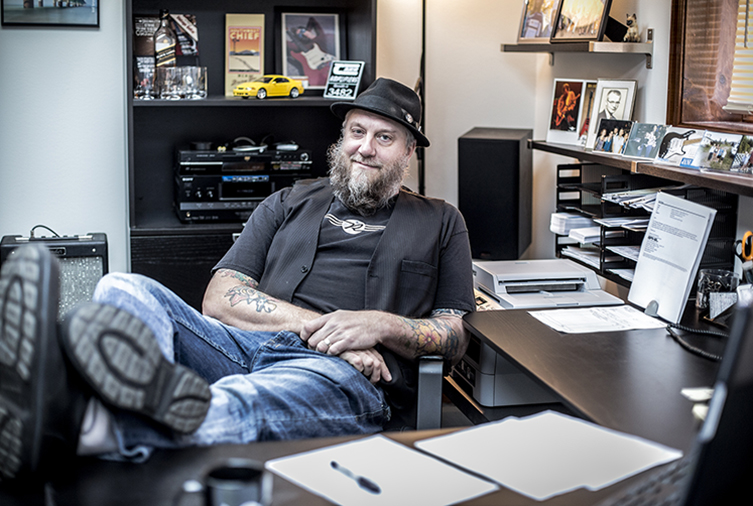
Guitarguitar: So, before we talk about the guitars, I wondered if we could learn a little about you, your background in music and in guitars?
Ken Haas: Uh, Whoo! I started playing in Punk bands in high school in reaction to all of the...basically in reaction to the band Europe.
GG: Oh yeah?
KH: I hated it. I hated where music was going, I hated that there were synthesizers in Heavy Metal at the time. I formed a Ramones cover band with some friends of mine in high school and it stuck! I ended up playing with those two guys well into the 90s and stayed with music. The bass player and I stayed together for many, many years. But that was the initial thing, it was very reactionary. We were into, y’know, Bob Mould, Husker Du, Dag Nasty, Fugazi: we were into that stuff. All those bands were still touring: you, know, The Descendants, all that stuff, and we loved all that Pop Punk thing.
So, I started drifting towards bands like Big Drill Car, and like Dag Nasty, where there were these Punk Rock bands with lead guitarists!
GG: Yeah.
KH: They had guitar solos in the songs. And these guys like Brian Baker and Stefan Edgerton these guys were incredible lead guitar players. I thought it was so cool, because I’m like: ‘I love guitar’! And I saw Stevie Ray Vaughan’s Cold Shot video when I was 12, with all the guitars coming from everywhere, and I was like, “Oooh, that’s amazing!”
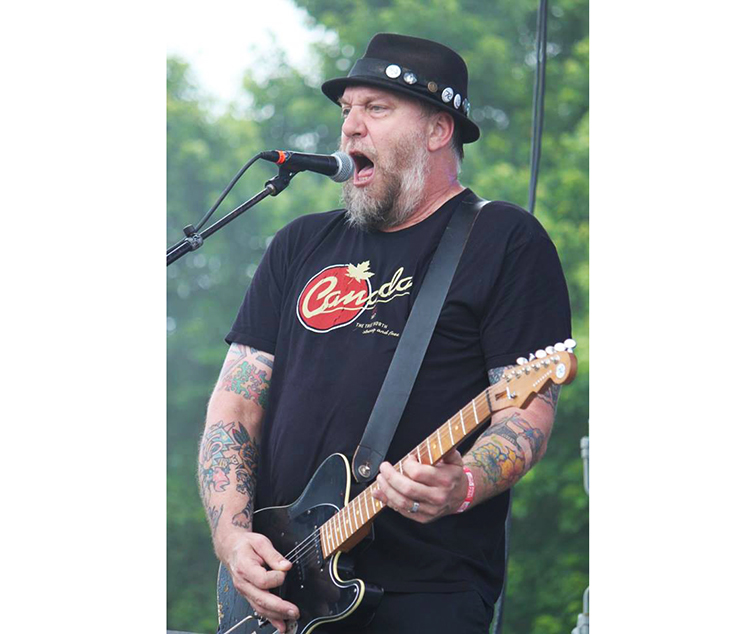
I had an uncle that played, and I inherited his guitar when he passed away, that’s what got me started. So, I love the guitar thing, and I love the Punk Rock thing, and then I finally figured out that the two things could be...
GG: Could co-exist?
KH: Could co-exist, right. Um, and co-exist on a whole level with the bands I’ve just mentioned. So! I took that attitude going forward and played on bands all through the 90s. By the late 90s, Reverend guitars was founded in the Detroit area by Joe Naylor, who does all the design work for the brand. I just found one of his guitars, used, and I had a whole other day-time job career path going and when I saw that guitar, played it and loved it, and I saw that it said ‘East Point, Michigan’ on the headstock, I said: “Well, that’s right over there!”
I went and found out where he was and where he was making them and running this company, and we became very good friends. He took me to a NAMM show as a guest, and I didn’t even know it existed!
GG: Was this Winter NAMM? (Every January in Pasadena, California: Ray)
KH: This was Summer NAMM (Every July in Nashville, Tennessee: Ray) in ’99 or 2000. I didn’t even know that was a thing! I’d been playing guitars, I was 30 years old, I’d been playing guitar in bands in bars and all-ages shows ‘n shit for 13 years. When I went to the NAMM show, I walked in and looked around and went: “Oh! Wait, I’m meant to be here”, I just knew it! It was like: lightning bolt!
So, while I was there, I sold a couple of guitars to some prominent players of that era, one being Will Ray from the Hellecasters. He bought some guitars from us and Joe was so impressed that I sold Will Ray, and really, it was totally be accident! I was talking to him because I’m a fan, and he was a really big guy, I was surprised at how tall he was (which means that he must be a GIANT, since Ken himself positively towers over my 5ft 11” frame: Ray). I was fanboying out on him and he asked me about my NAMM badge, ‘Reverend Guitars’! I told him all about what we do, and he got all excited about it and bought some! Joe was like: “Dude, if you can bring guys like that into my booth and sell them guitars, I’m going to bring you to every one of these shows.”
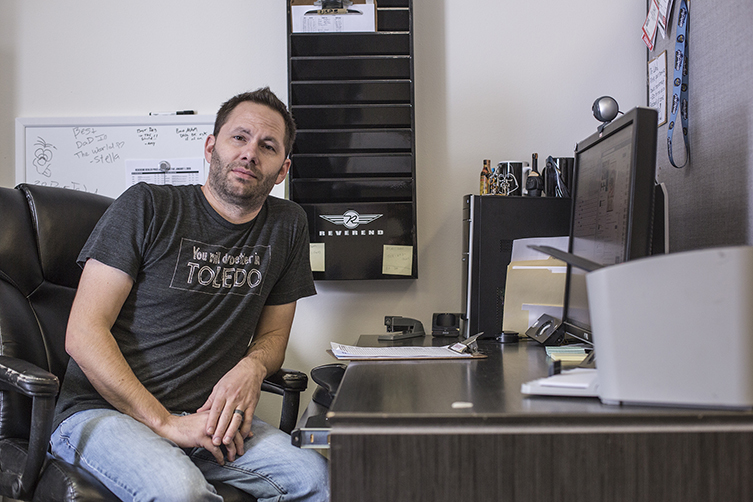
So that led me to then going to trade shows with Joe for 6 or 7 years. In 2006, when we launched a lot of the guitars that we’re carrying now – the Jetstreams and Chargers of the time we called the Stage King series – I went and had a really good Winter NAMM. Joe was like ‘I have to hire you full-time’ because we’d opened up a lot of dealers, who knew me and were talking to me. So, I was finally able to get into the business full time.
In 2010, my wife Penny and I bought the company from Joe so that he could just design guitars. The company was growing and the business side of it didn’t hold Joe’s interest as much as the guitar side of it did. He was constantly being pulled away to deal with stupid shit, as one is when one is running a business, but it was keeping him away from the one thing he really loved to do! We bought the business from him and we hired him back as our full-time designer, our ‘guy’, so he could have the role of creativity.
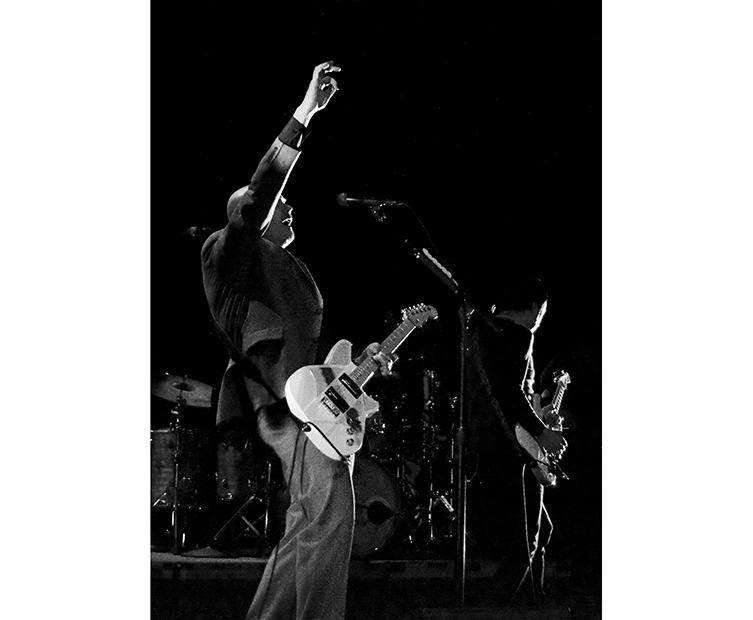
There are things that we do – you and I discussed Billy Corgan and Reeves Gabrels (previous to the interview we spoke about Reeves, who plays for the Cure and used to be David Bowie’s guitarist, and Billy, who is the frontman and lead guitarist of the Smashing Pumpkins) and some of the artists and stuff that we work with, the new model that we have with Robin Finck...the Reverend philosophy isn’t ‘Well, we make this guitar, we want to put your name on it.’ It is: we wanna make the guitar that these artists are actually playing live, and we wanna make it so that the fan can go and buy that guitar. So Billy Corgan is, say he’s playing Glasgow next week and say his gear gets stolen.
GG: Mm-hmm.
KH: He can come and buy a couple of signature models from you guys and those are the exact same guitars he’s getting from us. It’s no different; there’s no magic, none of that.
GG: No switch-and-grab.
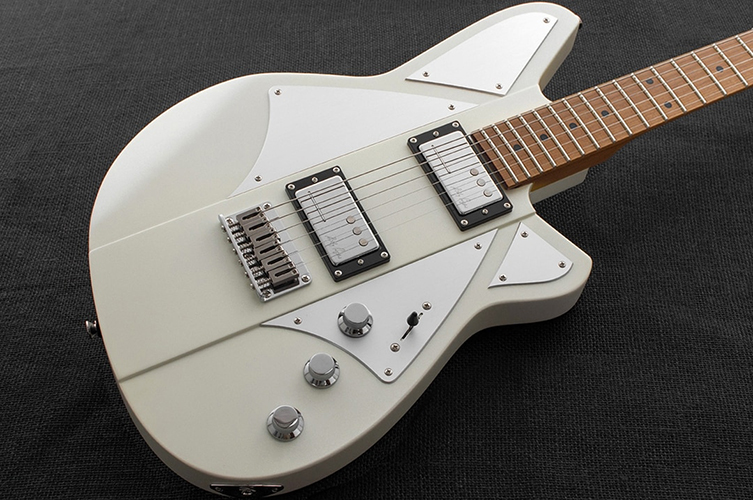
KH: Right. That’s what it’s about. It’s about the fans of these guys bring able to buy the same guitar that those guys were playing and have it be affordable! Joe works very, very closely with the artists to make that happen: sometimes there’s a lot of back and forth, and sometimes it’s...like Robin, he just loves our Senseis. We were doing minor modifications to them for him to take them out on tour. So, the idea of doing a signature model with him became ‘let’s just offer it’.
GG: For somebody like Robin, I notice he’s been playing Sensei’s since about 2017. Just taking him as an example, did he come to you guys and say, ‘what have you got?’, did you approach him, or did he just happen open them like you did originally? How did that relationship begin?

(Photo: Michelle Shiers)
KH: Somebody from my organisation is a really, really big fan of theirs (Nine Inch Nails: Ray) and reached out to him and asked him if he’s like to try out a guitar. And he tried a guitar and he loved it. Then it just kept building from there. I’ve had that with a few guys. Our relationship with Billy was very similar to that. There was a girl who used to play bass in Smashing Pumpkins for years called Nicole Fiorentino. Really nice girl. My Sales Director just loves the Smashing Pumpkins and was friends with her on social media. She posted about being at the NAMM show and he was like ‘See me! I’m at this booth!’ She did!
GG: Cool!
KH: She ended up getting some basses for tour and we ended up going to a Pumpkins rehearsal where she was trying out the basses, and Billy still had the old Reverends that Joe made for him 15 years ago! When he played songs from that era, he used them. We kind of reconnected and one thing led to another and we have the Billy Corgan model.
Reeves Gabrels, we met at the NAMM show!
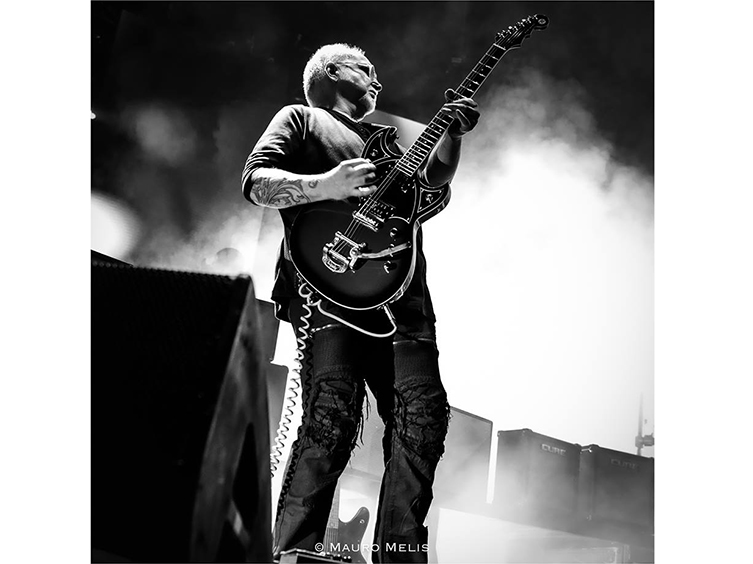
(Photo: Mauro Melis)
GG: Ah, alright!
KH: We have a mutual friend, a gentleman by the name of Audley Freed, who lives in Nashville. He plays with Sheryl Crow. He and Reeves hung out at the same place in Nashville and Audley had some Reverend stuff that we got to him whilst he was touring with the Black Crowes.
We’re really good friends with the Drive-By Truckers, so we got into that community pretty well, and the Drive-By Truckers guys have our stuff and use our stuff off and on still. We’re very, very flattered, because we don’t pay them, you know? We don’t pay any of these guys.
So yeah, he (Audley) brought Reeves into our NAMM booth and Reeves’ relationship with the company he was working with before us fell apart when that company got sold. He went to a NAMM show and grabbed half a dozen guitars from half a dozen different manufacturers and called me two months later telling me he couldn’t put it down.
GG: Aww, cool.
KH: And it was just on from there.
GG: Now he’s got 3 or 4 different Reverend models.
KH: Yeah, and they’re wonderful guitars and he’s a wonderful human being.
GG: I love that. Reeves is great. Big influence on my younger self.
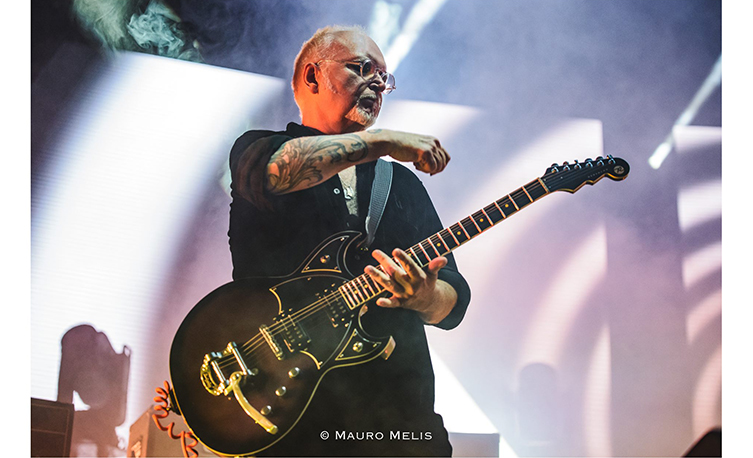
(Photo: Mauro Melis)
KH: Yeah. Did I ever answer your question?
GG: You answered about five of them there! We’re doing good!
KH: Sorry about that!
GG: No, that’s why we’re here! I want the conversation! Much better than emails, for sure.
KH: Ah, okay.
GG: Dumb question, but where does the name ‘Reverend’ come from?
KH: Uh, when Joe started the company, the original design of the Reverend guitar was a very, very non-tradition design of the body composition that basically had a plastic top and back. Phenolic, like a kinda countertop type thing?
GG: Sure.
KH: With a centre block of Korina. They were very, uh, he targeted a lot of Blues players initially. Joe was a bigger Blues fan then than he is now, but in looking through Vintage Guitar magazine and Blues Guitar Player magazine and all that kinda stuff. And the Blues guys are all calling themselves Reverend this, Reverend that, Reverend Billy Gibbons and it was a thing that just came up a lot!
GG: Yeah.
KH: And Joe, he started noticing it more and more, and he thought that the guitars should be kinda revered, they should be a thing, and that’s where the name comes from!
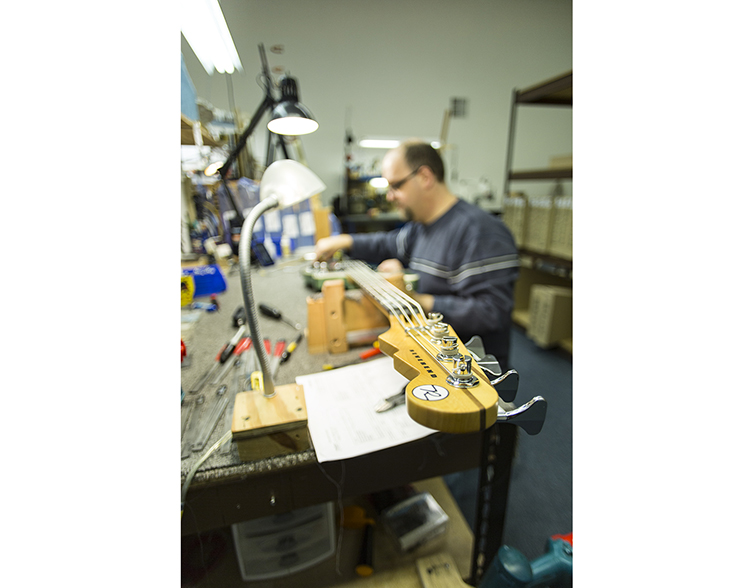
GG: I love that! It needs to come from somewhere, right?
KH: Yeah, of course!
GG: And the ‘Delta’ tradition is a really good one for a guitar brand. Um, so, are you a Detroit native yourself?
KH: I am!
GG: In terms of the style, the attitude of the company, is there a lot of Detroit in Reverend guitars?
KH: Without a doubt! Naylor’s first business was Naylor amplifiers in the early 90s and Naylor’s first endorser was Ron Asheton of the Stooges and his band Destroy All Monsters. Ronnie loved Joe: just loved him. Ronnie had...everything Joe did, Ronnie bought! (laughs) When Joe started making Reverend guitars, Ron was in.
So, the Stooges encompass Detroit and Ann Arbor. It’s what it should be. It’s what we aspire to! They’re the originators of so much: so much of modern music can be traced back to the Stooges and Iggy Pop, it’s ridiculous.
GG: Agreed.
KH: And quite frankly, the connection to Bowie and Reeves to the Iggy camp is, you know what I mean? It’s a thing! It’s huge, it’s this massive community! It’s super-cool. So, um, Joe, when he started making guitars for Ron, were a little bit boomy, because of the semi-hollow construction of all of those instruments at that time. And you can imagine the Stooges guitar tone! It’s a buzzsaw! It’s a bridge pickup on a Strat into a bunch of Marshalls! You know what I mean?
GG: Oh yeah!
KH: It’s not pretty! But it gets the attitude across.
GG: Big time.
KH: So even with single coils in our original guitars, they were a little bit boomy on the bridge pickup for Ron’s thing. And the Stooges were doing a reunion tour at this time, and Ronnie was gonna play Reverends. Joe developed the Bass Contour circuit in order to remove the ‘woofyness’ from the original guitars specifically for Asheton. And it worked so well that it started finding its way into all the other instruments. Then, even when we started doing solid bodies, we were just kinda used to it.
GG: Yeah.
KH: It doesn’t really boost anything, it’s a cut.
GG: It’s for sculpting.
KH: So, wide open, you’re just playing straight through, which is why it works without batteries. But it’s a fantastic little thing! You know: you’re at a rehearsal space that you’re not used to, or you’re jumping up to play with a band you don’t know, or your at Blues night at the Club or whatever and the amp you’re plugged into is a little woofy and maybe sounds a little muddy. You can fix that right away!
GG: Yeah.
KH: Or, one of the things that I like to do, because I’m a single channel amp kinda guy now, is roll the bass contour all the way off on the guitar, and crank the lows and the mids on the amplifier to make up for the fact that the bass is rolled off, and then when you roll the bass up, you start (makes a large whoosh noise) Yeeeah! Right? And just to be able to have all that!
GG: Yeah, indeed!
KH: And, y’know, if none of that interests you, then you just leave it wide open all the time! Just like with your tone control. It’s an interesting option to have, and that came from Ron. And I’m really proud that that came from Ron. And then with Ron, we eventually ended up doing a whole Signature model with Ron.
GG: A V-shape, right?
KH: Yeah, we wanted a V that sounded like a Strat! So, we put three P90s in a V, put the bass contour on it and away he went!
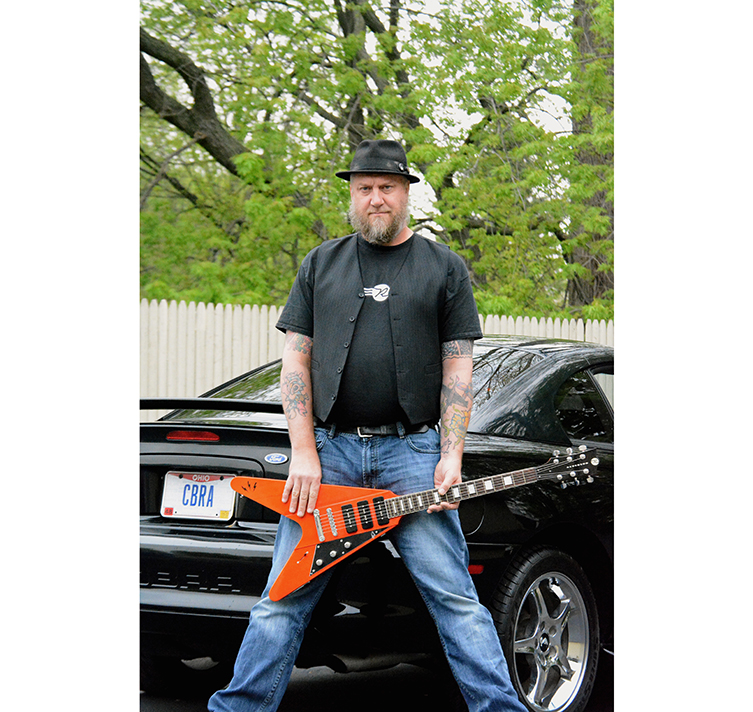
GG: Brilliant.
KH: Ron played various Reverend models throughout his career, and there’s one in particular that we have tons of pictures of with him, doing the Stooges reunion thing, so we’re gonna bring that model back.
GG: Aw, nice!
KH: The colour that he used, we’re gonna put his logo on it. And the money from that goes to a charity that his sister put together in his name in South Eastern Michigan. So, yes, the Detroit thing is very important to us.
GG: Hell yeah. It’s good to hear, because when people buy a guitar, they’re buying the story: the background, the mythology, the whole thing, you know?
KH: Yeah.
GG: That’s important.
KH: I think so too.
GG: And the Bass Contour is so interesting because we’re all used to guitars with humbuckers that can be coil-tapped: this is a whole other thing! And it works on the P90s as well, and the single coils.
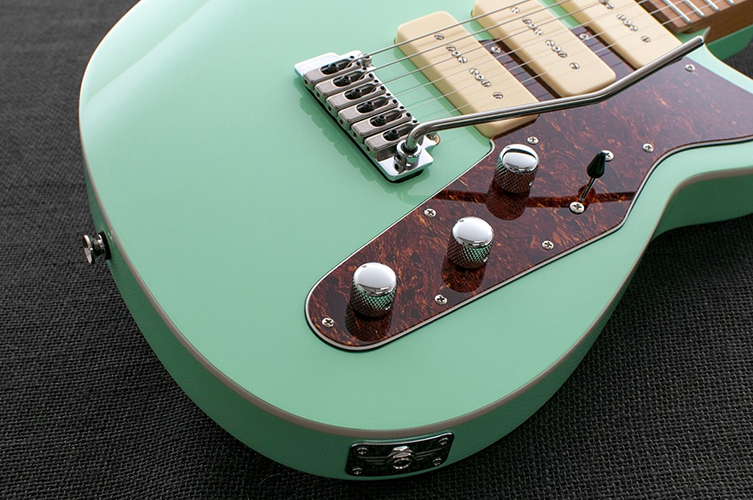
KH: Yeah.
GG: You always expect, as a player, that you can’t go anywhere ‘back’ from a single coil, you can only build on top. It’s really nice to be able to sculpt away and change your tone on a single coil.
KH: I agree.
GG: Good bit of thinking there!
KH: I’m not a big fan of coil taps. I think coil taps take good pickups and make them sound ‘less’. It doesn’t really achieve the thing like the contour control.
GG: And the Bass Contour doesn’t have to be on or off: you can have it at six or seven and get a new sound there, too.
KH: Sure! We have a single coil model called the Six Gun. We put our alnico T-style pickup up in the bridge and a couple of single coils on it. But it’s a Korina bodied instrument, so it’s throaty: it doesn’t sound like a traditional single coil guitar. It’s significantly meatier. So, even if it would seem that the Bass Contour is a bit superfluous on this single coil guitar, with this guitar it works just the same as with the Corgan model: it makes it sound more like a traditional single coil guitar, or a more traditional T-style.
GG: With that in mind, am I right in saying that all of the Reverend bodies are made with Korina?
KH: Yes.
GG: So, Korina is quite similar, sonically, to Mahogany?
KH: Yes, tone-wise, but it’s lighter in weight. Mahogany can be a fickle beast. It depends on where it’s from on the tree, how heavy it is. When you’re working with Mahogany, and then you chamber it, then the guitars get really dark sounding. Korina allows us to skip all that. And it’s not as tonally deep as Mahogany maybe, but it’s certainly not bright like Ash or Alder. It really sits in its own space: there’s an upper midrange thing that it does really, really well. And again, it’s fairly consistent in its weight, and it is an incredibly renewable wood. The forests grow very quickly, which, in this day and age, is a thing.
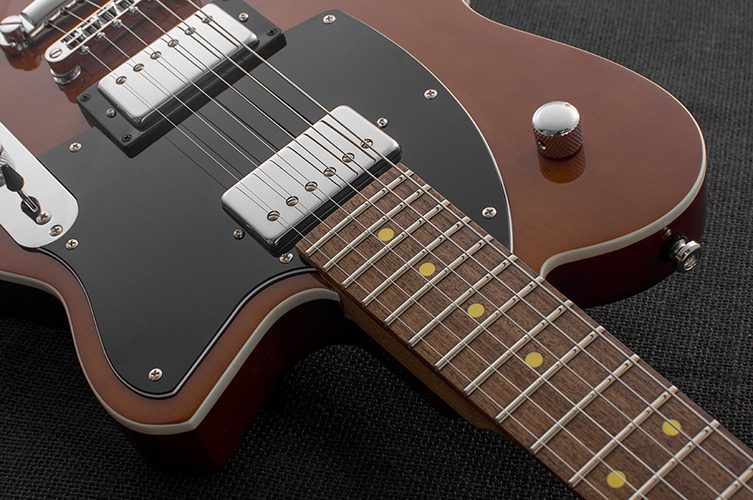
GG: Absolutely.
KH: It’s the Limba tree, they grow fast. So, uh, it’s a very renewable resource, which is cool. Because of its association with classic guitars of the 50s, manufacturers tend to tack on a price tag to using it, maybe unfairly because, while it is a premium product, it still can be affordable.
What we get with it is sometimes...how do I put this? Well, I’ll just put it the way I always put it with everybody, cuz I’ll tell everybody who asks: I can make a guitar with a flawless finish out of Korina. And how you do that is, you primer it, right? And then you put on a quarter inch of some sort of sealer or something and you sand it perfectly flat. And then you paint it and then you bury it in clearcoat and then you sand it perfectly flat again. What you end up with is a guitar that has a flawless finish on it, but it weighs an extra pound because of all the finish on it, and you’ve killed a lot of the resonance of the wood.
Once of the things we do very purposely is we put a thin finish of everything on the body: on the solid colour coats, the Metallics...they have a very thin layer of sealer on them, so that what you hold them up to the light, you can see the wood grain through a solid colour finish. It’s done like that on purpose. I don’t wanna bury the sound of the wood in a bunch of clearcoat.
With Korina, what you end up getting sometimes on the Natural finishes is little spots, little flaws. It’s difficult to handle sometimes, like there might be a little imperfection that’s underneath the finish, and because we didn’t bury it in all this clearcoat and stuff, you can see some of that stuff when you hold it up to the light. The flipside of that is a better sounding guitar.
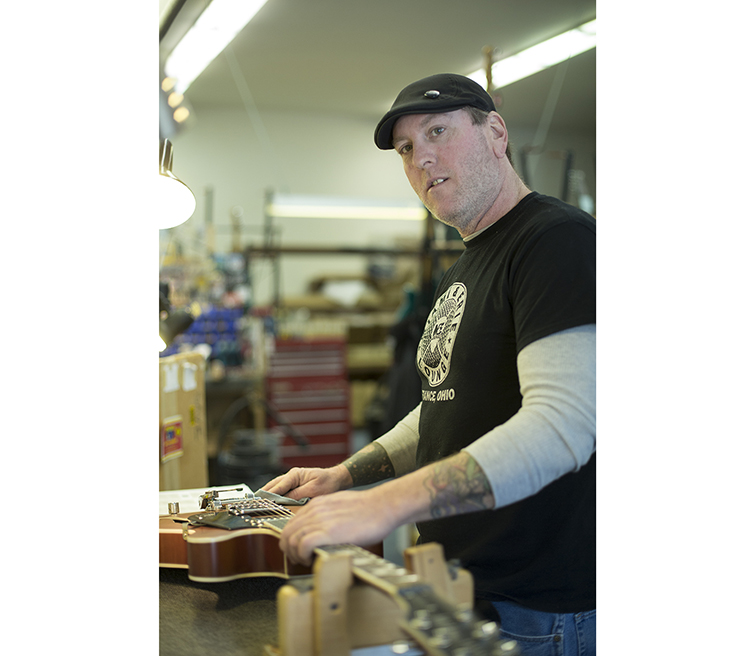
GG: Ding dong!
KH: We are going to err on the side of the better sounding guitar! That’s out thing! The whole Reverend concept is: there is no reason why, with the world’s manufacturing capabilities today, why you can’t have a professional level guitar cost around or under a thousand US dollars. We compete with guitars that cost two or three times what ours cost, because if you were to sit down and play them...
GG: Different league.
KH: Right. The artists that we work with are Reeves and Billys and Robins. And Pete Andersons and Rick Vitos, Mike Watt and all these guys. What appeals to them, too, is: a) their ability to get a replacement if they need it, and b) their fans can actually go buy one.
GG: Yeah.
KH: You’re not looking at a ten-thousand-dollar thing.
GG: That’s important.
KH: It’s a thing! That’s sort of what we’re going for.
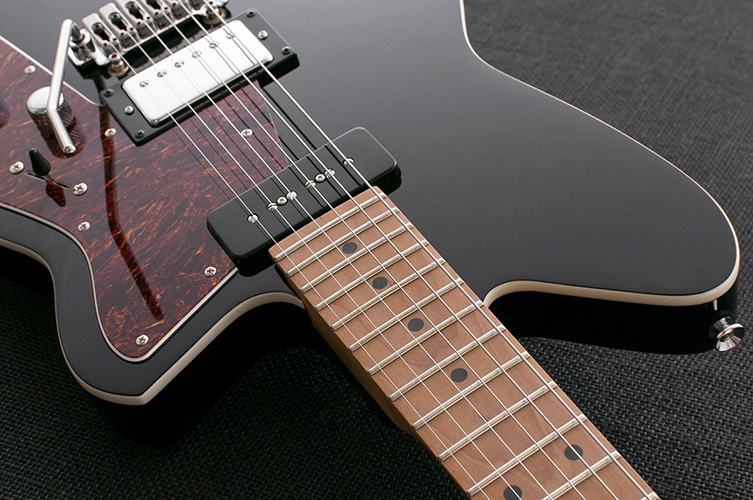
GG: And another thing that I’ve noticed with the bolt-on Reverends is the Roasted Maple necks.
KH: Mm-hm.
GG: So, that’s torrefaction, right?
KH: Yes.
GG: Other manufacturers add a scandalous amount of money onto the cost of guitars that feature this. You guys have just decided to roll that out to all of the bolt-on guitars. Can you tell me a little about that decision?
KH: (deadpan) We think it’s cool.
GG: Hahahahaha!
KH: Hahahaha! Right? Yeah. I know, I know! That was really heavy, really intense! Yeah, (Joe) Naylor got a Roasted Maple neck for his personal guitar and he loved how resonant it felt.
GG: Yeah.
KH: And he loved the way it felt in his hands. And the stability of it, because the moisture in the wood reacts to the moisture in the air, which is why, as the seasons change, necks do things. You can’t fight physics: physics is physics!
GG: Yes, physics will win.
KH: These things happen, but what we found with the Roasted Maple necks is that the first winter, if you get a little fret sprout, it’s very minor.
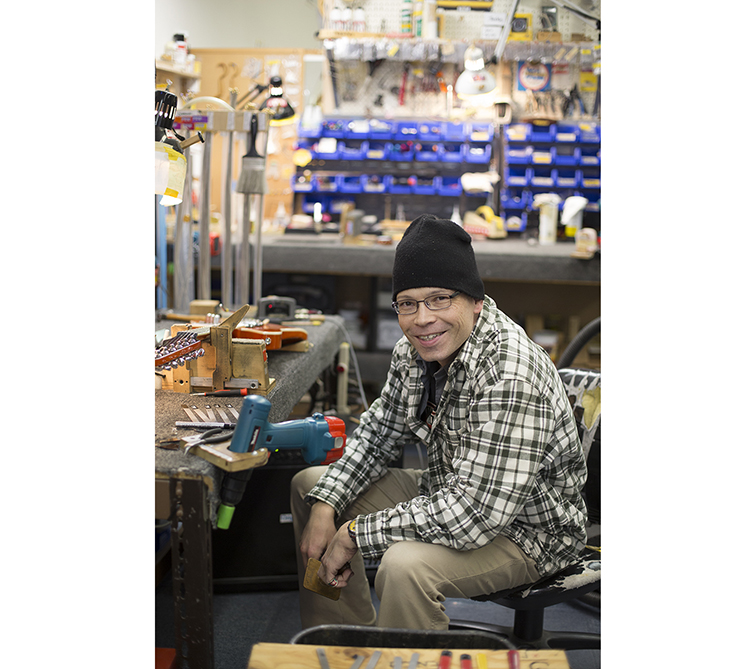
GG: Okay.
KH: That’s not to say that is isn’t gonna happen, especially if you get some minus 20 degrees extreme weather than goes forever and ever, because you can’t fight physics. They (Roasted Maple necks) have a better temperament to that sort of thing and they just feel and look great! They are very, very resonant. I mean, we had a little upcharge, when we started doing them, it is what it is, but when we made the commitment to do it across the line...
GG: It ups the whole quality level of the guitar as well.
KH: I agree. Yeah, and why even screw around: we have the locking tuners, we use synthetic bone, Wilkinson hardware for the bridges they make, they make great product.
GG: That pots and the input jack are quality, too, aren’t; they?
KH: Right! I ...what’s that brand called again...it’s got the thing on either side, and when you plug the guitar in, it grabs it on both sides. I forget the name of the company that makes it, but ah, Puretone? Puretone!
GG: That’s it!
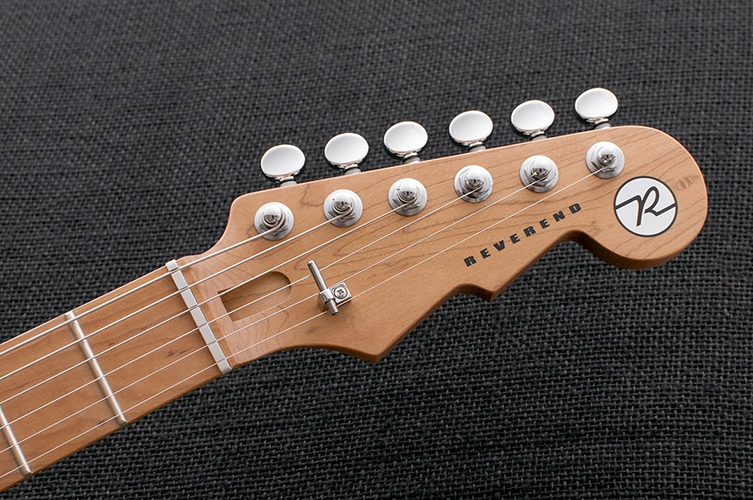
KH: So, you feel it click and it’s really in there! They don’t fail! And so, what’s a couple bucks to have the thing, y’know? And then the proprietry little string tree thing, it works! It just does what it says it was gonna do! Tilt-back headstocks are cool but they’re not always appropriate. I don’t fly anywhere with tilted headstocks: I flew over here with two guitars, I had a gig this last weekend.
GG: Oh, cool!
KH: I flew over with two bolt-on guitars in gig bags. Those are good to fly with.
GG: Hell yeah. Hey, what’s your own favourite Reverend model?
KH: The Airsonic.
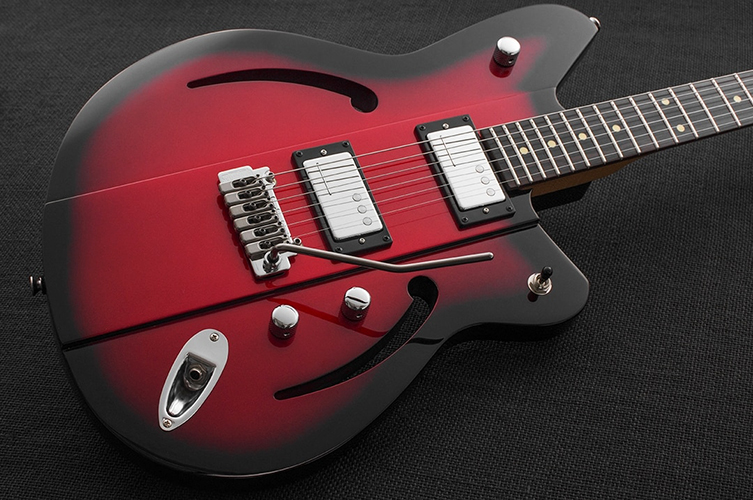
GG: Ah yes, the larger bodied semi-hollow?
KH: Mm-hm! It is a solid body guitar and it’s carved so that the centre is thicker, and the wings are very, very thin. And the f-hoes are punched straight though. The wings vibrate freely when you play, so it’s this weird hybrid of sound of hollow-body tone and solid-body tone. There’s never feedback issues because it’s solid.
GG: Oh, cool.
KH: It’s just a fantastic...to me, it’s the epitome of Joe’s design. And the pickups that we’re putting in the tremolo version of the Airsonic are pickups by Railhammer called Hum-Cutters and they just sound terrific. They accent everything that needs to be accented. It’s like all of Naylor’s ideas from the last 23 years all came together in this instrument! It’s unusual: the through-the-body f-holes throw people, you know? But there’s science behind all of it. It’s not just the through-the-body f-holes: the Bass Contour is on the upper horn, so there’s a cavity in the upper horn, and there’s also a cavity behind the control plate. All that wood being removed from the wings assists in how the wings vibrate through the wood when you play! So, when you hold it in your lap and you strum a chord, you’re like: Wooo-wow! Haha! Wow, what’s happening here, right? And you can hear that! I just think it’s bad to the bone.
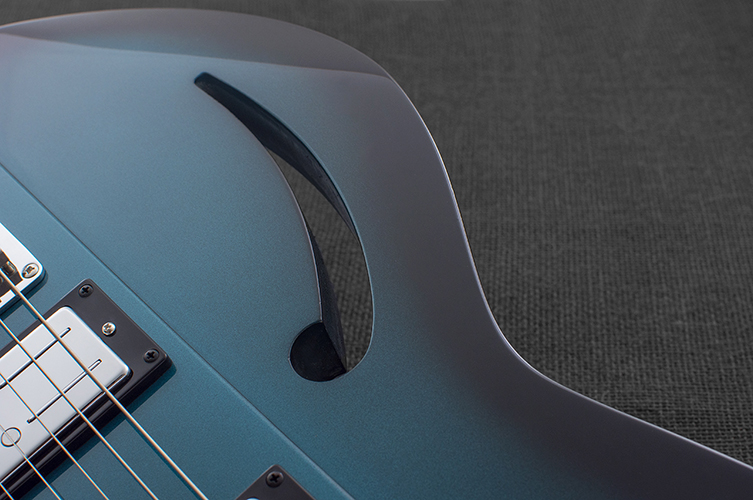
GG: Nice. You know, I think that’s all of my questions! I think we’ve covered it all!
KH: I’m a Sagittarius, my favourite colour is purple...
Both guys: Hahahahaha!
GG: Actually, one more, which I always ask: what’s your favourite riff of all time?
KH: (silence)
GG: It’s going on record so make sure it’s a good one!
KH: Sultans of Swing.
GG; Wow!
KH: Yeah, I know but I love Mark Knopfler.
GG: That’s more punk and subversive than picking a punk riff, nice one!
We chatted a little more and then it was time for Ken to head off. I had a ball talking to him and learned a lot about the attitude of the brand. These are great guitars, and the company has an amazing vibe about it. With more and more top-flight players moving across to them, Reverend are proving themselves to be a major contender, not to mention a legitimate alternative for today’s gigging player.
We’re proud to have them with us, and we can’t wait to see what comes next! Please check out our Reverend guitars here on our site.
We’d like to thank Ken for not only making time for us, but for being so sharing and entertaining! We’d also like to thank Penny and Jeff at the Reverend HQ for all their help.
Until next time, thanks for reading.
Ray McClelland


